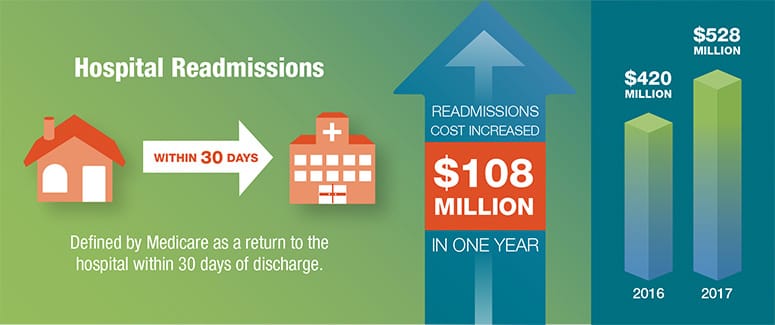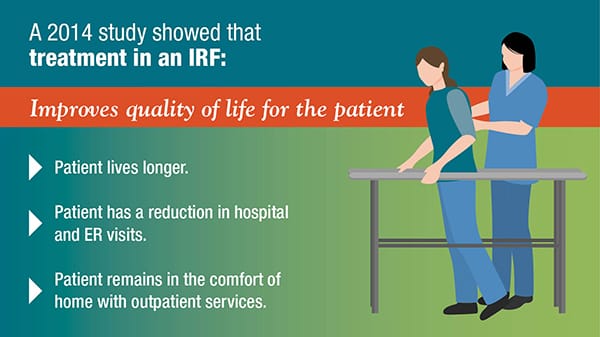The dangers of patient immobility are becoming clearer as well as how they are linked to causing hospital readmissions.
Studies show that keeping hospital patients in bed or in a chair can increase the likelihood of muscle atrophy, blood clots and wounds. For some patients, immobilization – even for a few days – can lead to a permanent functional decline.
With this convergent focus on reducing readmissions and research findings on the propensity of immobility to negatively impact patient recovery, learn how some providers are adapting their practices in response.
The Latest Research on the Damages of Immobility
A study, published in the Journal of the American Geriatrics Society in 2009, found that older patients (the mean age of study participants was 74) on average spend 95% of their hospitals stays in bed or sitting in a chair.
“Right now we have an epidemic of immobility,” study co-author Cynthia J. Brown told The Wall Street Journal. And for these patients, hospital readmissions are more likely to occur. (1)
In 2017, the cost of hospital readmissions within 30 days of discharge increased to $528 million, $108 million more than in 2016. (2)

The federal government has also taken strides to decrease readmissions through Medicare’s Hospital Readmissions Reduction Program. For the 2018 fiscal year, 2,573 hospitals faced reduced reimbursement due to higher-than-expected readmission rates.
(3)
New CMS Initiatives and Pilot Programs Encourage Mobility
Many hospitals and health systems have launched pilot programs to address this critical need for mobility.
The Center for Medicare and Medicaid Innovation, which is part of CMS, is supporting these efforts through its Mobility Action Group, which aims to identify and share how hospitals can best promote mobility while reducing falls. These ideas could be utilized
in your practice or facility.
- At Johns Hopkins, a 2008 review of 24 studies dealing with ICU patients found that early rehabilitation can lead to shorter time on a ventilator and shorter time in the ICU. (5)
- One program at the University of Pittsburgh Medical Center Shadyside utilizes mobility aides, staff members specially trained in keeping patients moving. The aides have become so popular that patients ask for them by name. (6)
- At the University of Alabama Birmingham Hospital, seminars were held to teach nurses safe mobility techniques to reduce discomfort associated with getting high-fall risk patients out of bed. (7)
- A pilot project at Inova Fairfax Hospital in Falls Church, Virginia, trains nurses to identify when a patient is ready for more physical activity rather than turning the assessment over to physical therapists, which can lead to delays. (8)
The Important Role of Rehabilitation
In addition to pilot programs, healthcare professionals might also consider the important role rehabilitation plays in existing patient care plans.
Rehabilitation is an important thread that weaves throughout the patient care continuum and, as several studies show, the sooner it begins, the better – especially for elderly patients. Because physical, occupational and other kinds of therapies
can be present throughout the recovery process, inserting rehabilitation practices early and often in a patient’s journey can be used to combat immobility at various stages and care settings, including long-term acute hospitals, rehabilitation
hospitals and units, and in a home setting.
Rehabilitation therapy has been shown to help with early identification of issues that could potentially lead to a hospital readmission. It also helps improve function, patient satisfaction and quality of care.

How Kindred Implements Early Patient Mobilization
Throughout all of our sites of service, no matter the setting, we employ highly skilled therapists to provide rehabilitative care and support. Our rehabilitation experts have developed clinical programs with the goal of reducing rehospitalizations so
that our patients can maximize their independence.
The Move Early Program is one of the clinical programs aimed at getting patients moving as early in their recovery as possible to combat the many potential, and detrimental, side effects of immobility in the healing process.

Kindred Long-Term Acute Care Hospitals have further specialized the Move Early Program for mechanically ventilated patients – a very challenging patient population to maintain and improve functional status and mobility.
“Studies have shown that early mobilization and coordination of care for the critically ill patient on mechanical ventilation can increase functional outcomes and decrease hospital length of stays,” said Mary Van de Kemp, Senior Vice President
of Quality and Clinical Operations for Kindred Rehabilitation Services.
We work to incorporate movement into the patient’s routine as early as possible to optimize cardiopulmonary and neuromuscular recovery. We believe early progressive mobility is essential to restoring function, minimizing loss of functional abilities,
maximizing independence and facilitating ventilator weaning.
We are recognized as a national leader in ventilator weaning, with three decades of experience helping our patients avoid going back to a traditional hospital. Because of our tenured expertise and recent mobility research, we understand the importance
of providing specialized rehabilitation programs aimed at reducing the risk of rehospitalization through early and progressive therapies.
Our weaning care plans are carried out by an interdisciplinary team including pulmonologists, nurses, respiratory therapists and rehabilitation therapists.
The clinical benefits of the program include:
- Improved functional outcomes
- Decreased lengths of stay
- Enhanced cardiovascular function
- Increased functional mobility and strength
- Preservation of musculoskeletal and neuromuscular integrity
- Improved cognition
- Enhanced endothelial function
- Normalized blood sugar levels
To learn more about the importance of mobility in a patient’s recovery or how Kindred is implementing new programs aimed at reducing the risk of rehospitalization, please reach out to your Kindred representative, contact us or check
our pulmonary care information.
1, 4, 6, 7, 8: “Hospitals Increasingly Tell Patients to Get Up and Move" "https://www.wsj.com/articles/hospitals-increasingly-tell-patients-to-get-up-and-move-1505268180"
2: “Aiming for Fewer Hospital U-Turns: The Medicare Hospital Readmission Reduction Program"
3: “https://www.advisory.com/Daily-Briefing/2018/01/02/latest-hac
See your hospital's 2018 pay-for-performance penalty or bonus” (2)
5: “Get Moving: Johns Hopkins Research Shows Early Mobility Better Than Bed Rest for ICU Patients”